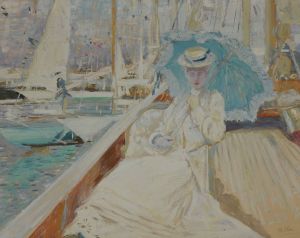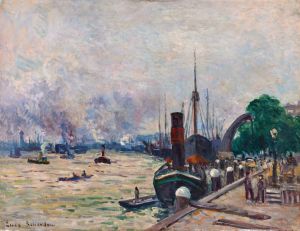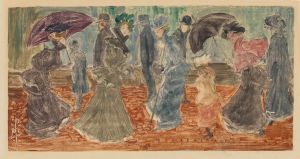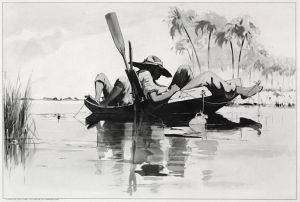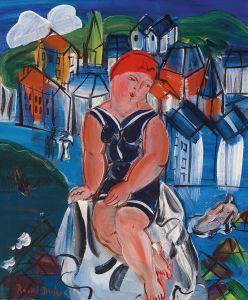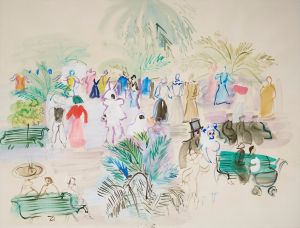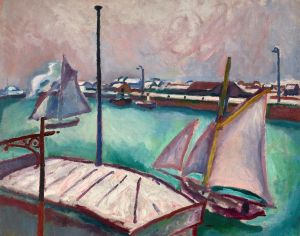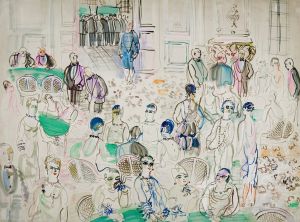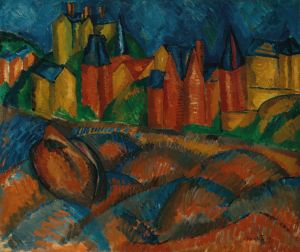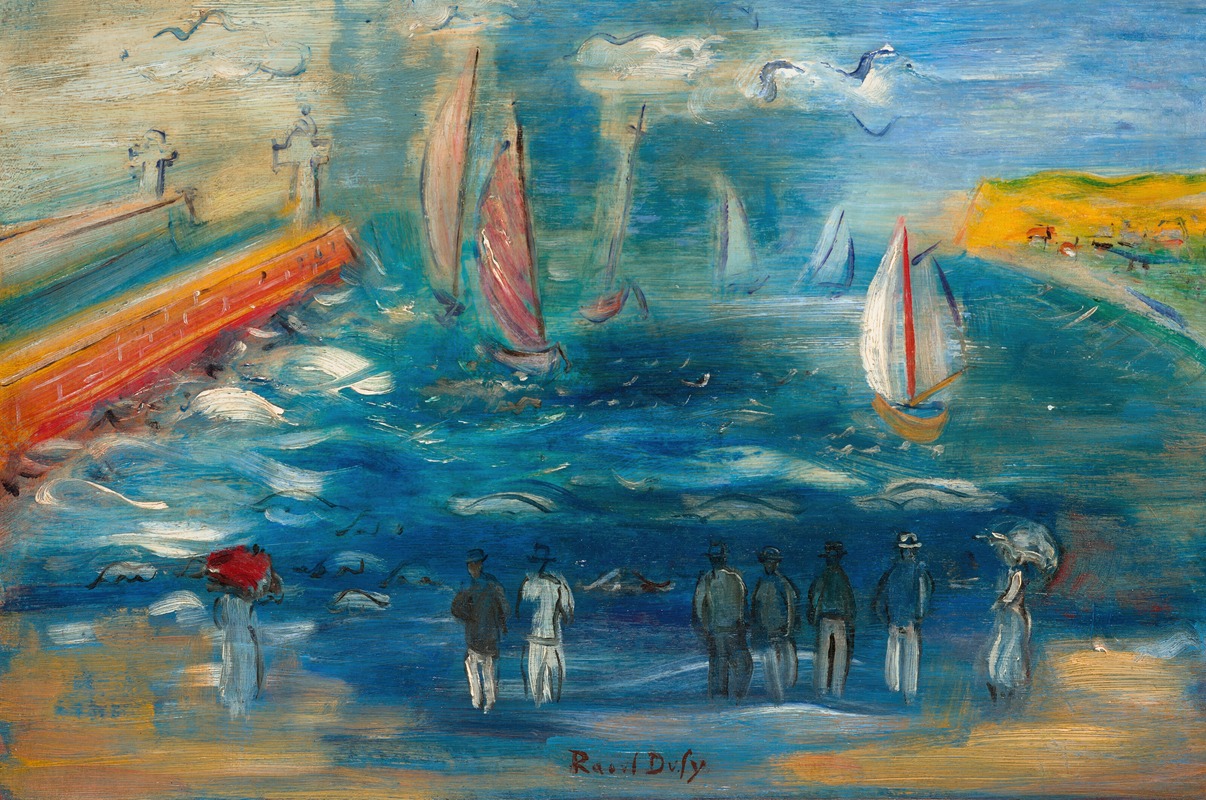
Départ des régates
A hand-painted replica of Raoul Dufy’s masterpiece Départ des régates, meticulously crafted by professional artists to capture the true essence of the original. Each piece is created with museum-quality canvas and rare mineral pigments, carefully painted by experienced artists with delicate brushstrokes and rich, layered colors to perfectly recreate the texture of the original artwork. Unlike machine-printed reproductions, this hand-painted version brings the painting to life, infused with the artist’s emotions and skill in every stroke. Whether for personal collection or home decoration, it instantly elevates the artistic atmosphere of any space.
Raoul Dufy's painting "Départ des régates" is a notable work by the French Fauvist painter, known for his vibrant use of color and dynamic compositions. Dufy, born on June 3, 1877, in Le Havre, France, was a prominent figure in the Fauvism movement, which emphasized painterly qualities and strong color over representational or realistic values. His work often depicted leisure activities and scenes of social gatherings, capturing the joie de vivre of early 20th-century France.
"Départ des régates" translates to "Departure of the Regattas," and as the title suggests, the painting likely captures the lively and colorful scene of a regatta, a series of boat races. Dufy had a particular affinity for nautical themes, which is evident in many of his works. His interest in such subjects was partly influenced by his upbringing in the port city of Le Havre, where maritime activities were a significant part of daily life.
The painting exemplifies Dufy's characteristic style, which combines elements of Fauvism with his unique approach to line and color. Dufy was known for his ability to convey movement and energy through his use of bold, expressive lines and vibrant, unmodulated colors. This approach is evident in "Départ des régates," where the dynamic composition and vivid palette capture the excitement and festivity of the event.
Dufy's technique often involved the use of thin washes of color, which allowed the white of the canvas to shine through, giving his paintings a luminous quality. This method can be seen in "Départ des régates," where the interplay of light and color creates a sense of depth and atmosphere. The painting likely features a bustling scene with sailboats, spectators, and the shimmering water, all rendered in Dufy's distinctive style.
Throughout his career, Dufy was influenced by various artistic movements and figures, including Impressionism and the works of Henri Matisse, a leading figure in Fauvism. However, Dufy developed his own unique style that set him apart from his contemporaries. His work often celebrated the pleasures of life, capturing moments of leisure and enjoyment with a sense of spontaneity and joy.
"Départ des régates" is a testament to Dufy's ability to transform everyday scenes into vibrant, joyful compositions. His work continues to be celebrated for its contribution to modern art, particularly in how it captures the spirit of its time through color and form. Dufy's paintings, including "Départ des régates," remain popular in art collections and exhibitions worldwide, appreciated for their lively depiction of early 20th-century life and their innovative use of color and line.
Raoul Dufy passed away on March 23, 1953, in Forcalquier, France, leaving behind a rich legacy of artwork that continues to inspire and captivate audiences. His contributions to the Fauvist movement and his unique artistic vision have secured his place in the history of modern art.





